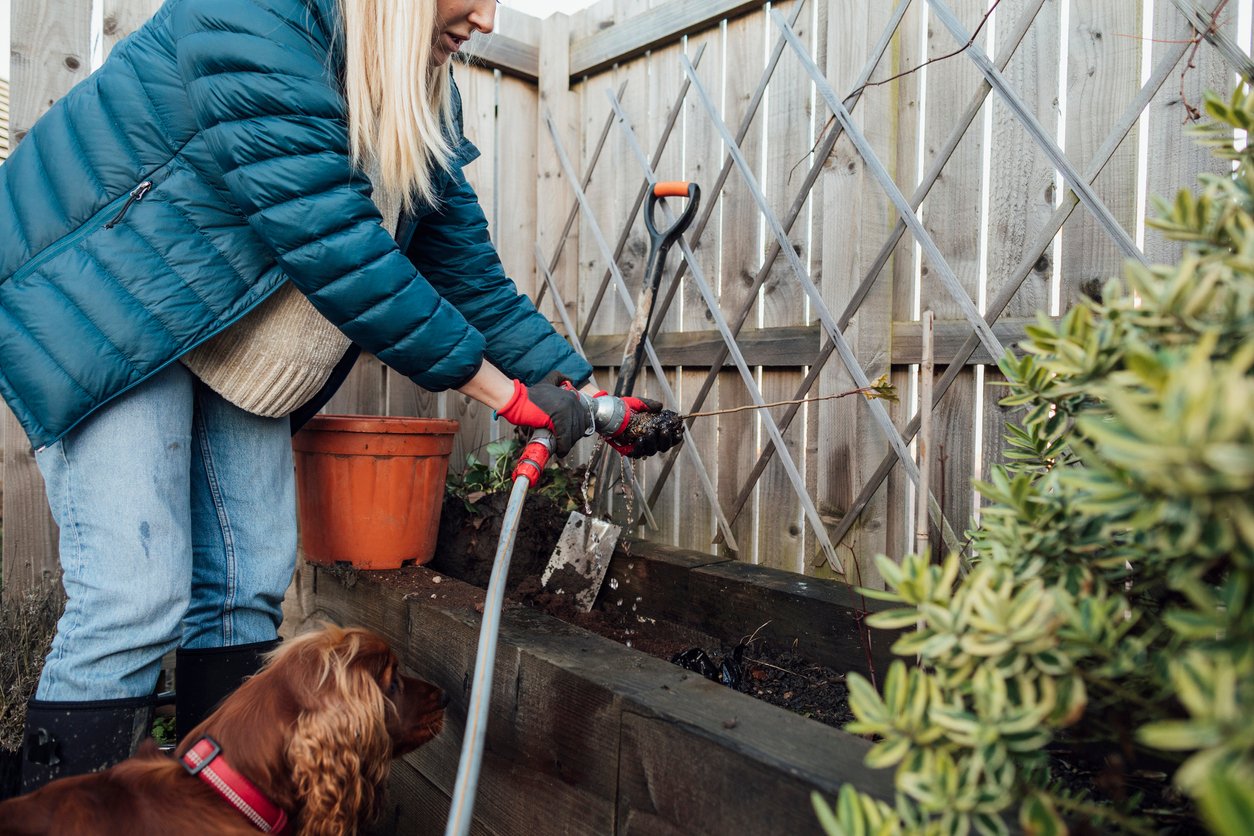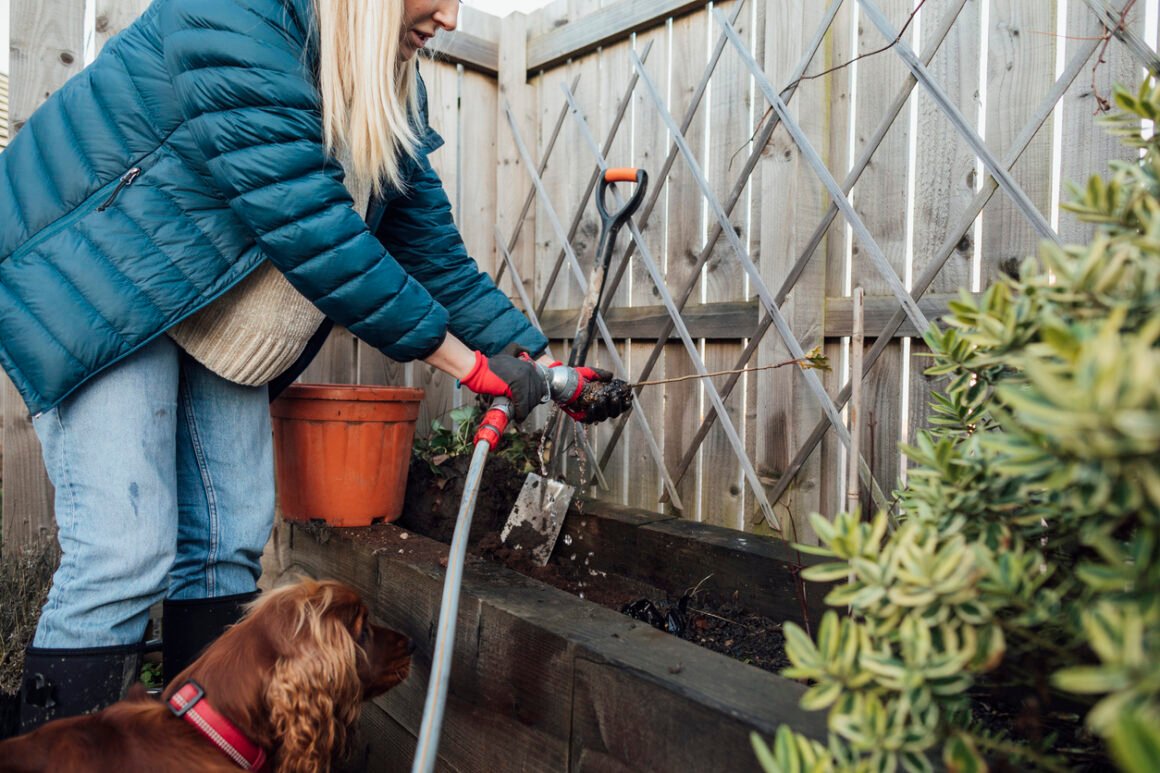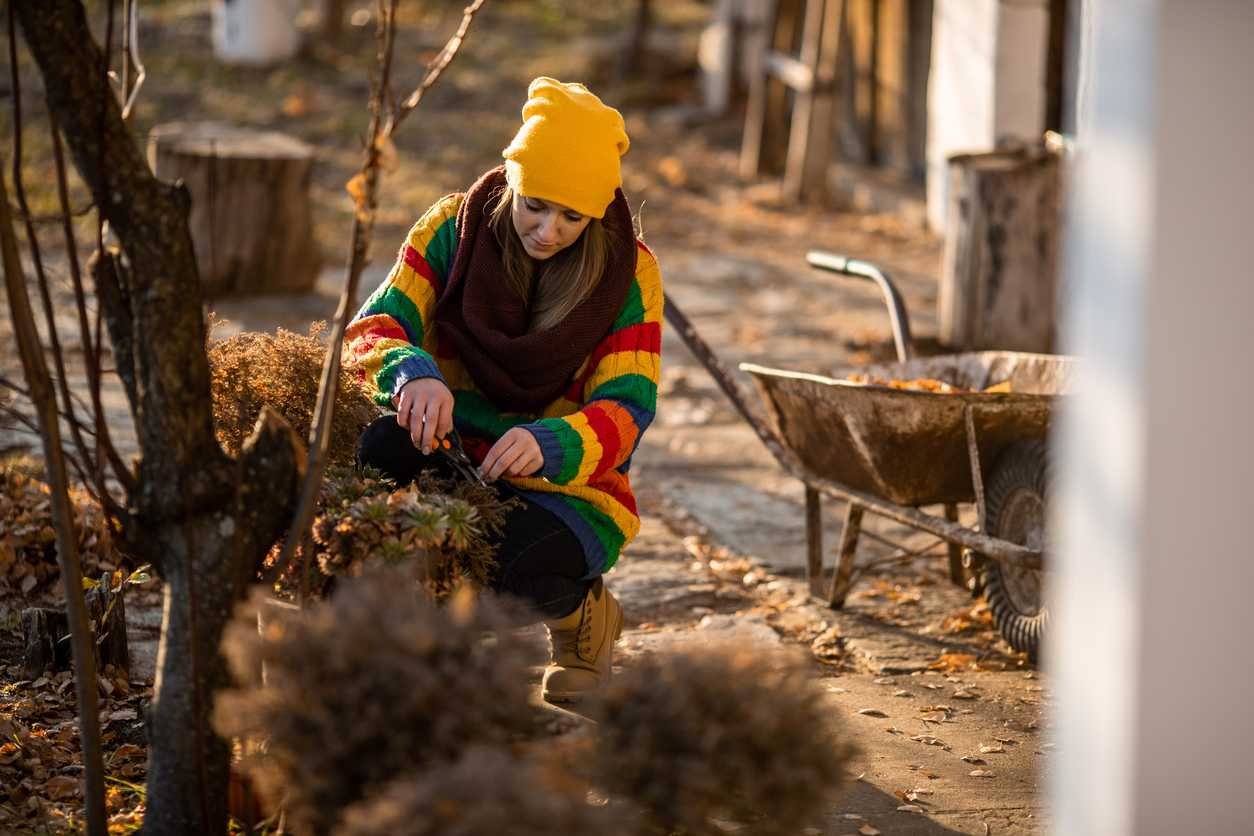Table of Contents Show
Winter is a great time to landscape your spaces, but the focus isn’t so much on the heavy lifting: it’s more on maintaining and priming your hardscapes, softscapes, and naturescapes for spring and summer projects.
The cold weather can keep weed seeds dormant, so you aren’t constantly battling weeds. You can also use a mulch to cover dirt that hasn’t been worked in spring. Mulch also keeps weeds at bay, so you don’t have to spend your time weeding right now.

However, most people don’t landscape during the winter because it’s too cold and wet. Luckily, there are ways to landscape even in the worst conditions.
Here’s how you can have a beautiful, weed-free lawn even if it’s the coldest time of the year and pave the way for a well-landscaped outdoor living space.
Create Your Landscape Plan
Before you begin, you should have a plan for what you want your lawn to look like. Draw up a diagram or take pictures of the area that you want to landscape.
You should know what plants and how many of them you want before digging holes. Consider looking at images online or in magazines for ideas if it’s too cold outside.
Read Also:
Don’t Water the Lawn
It sounds counterintuitive, but the best way to keep your lawn looking great is not to water it. When it’s too cold to water the lawn, you should use a layer of mulch.
This will help keep moisture locked in and prevent the grass from turning brown. You can also install a drip irrigation system to have an even level of watering across your lawn.
Remove Weeds
One of the worst parts of winter is that it’s hard to get rid of weeds. You want your lawn to look nice and weed-free, but it can be challenging to remove weeds when it’s freezing out.
To make your life easier, you should use a weed killer with an active ingredient of glyphosate. This will kill the weeds without damaging your lawn and plants. However, you must follow all instructions on the product carefully to avoid any damage.
Rotate Softscape Plantings
The most important thing you can do for your lawn is to rotate softscapes. This will prevent the same weeds from growing year after year. There are many different ways that you can rotate them.
After a few years, switch from sod to amending with compost for some time and then back to grass. You can also alternate between seeds and plants every few years to avoid weed buildup.
Trim Branches Shorter
You will want to trim any plants that might have grown taller than your desired height. You can also trim and shape bushes, hedges, and trees.
If you have any diseased or damaged branches, you can also prune those. Just remember to keep your shears at the ready!
Control Salt
Salt from melted snow can run off and inhibit a healthy lawn come spring, so stake some barriers that can stop runoff directly from your paved areas where you might have salinated snowmelt.
As winter approaches, you might be feeling the urge to hibernate. But it’s time to wake up and get out there. Your lawn is calling for you!
The best time to do your lawn is in the winter when the ground is moist and the grass has no leaves to compete with.
Don’t forget, chinooks roll in, and while the ground might be a little more frozen, the top layers of your softscapes can get easier to deal with. It’s also a good time to make sure that you’re rotating your crops and trimming to only what’s necessary.
You can even add some fall flowers when you put down your lawn fertilizer. Stay on top of these tasks, and your lawn will stay looking its best all year long!











